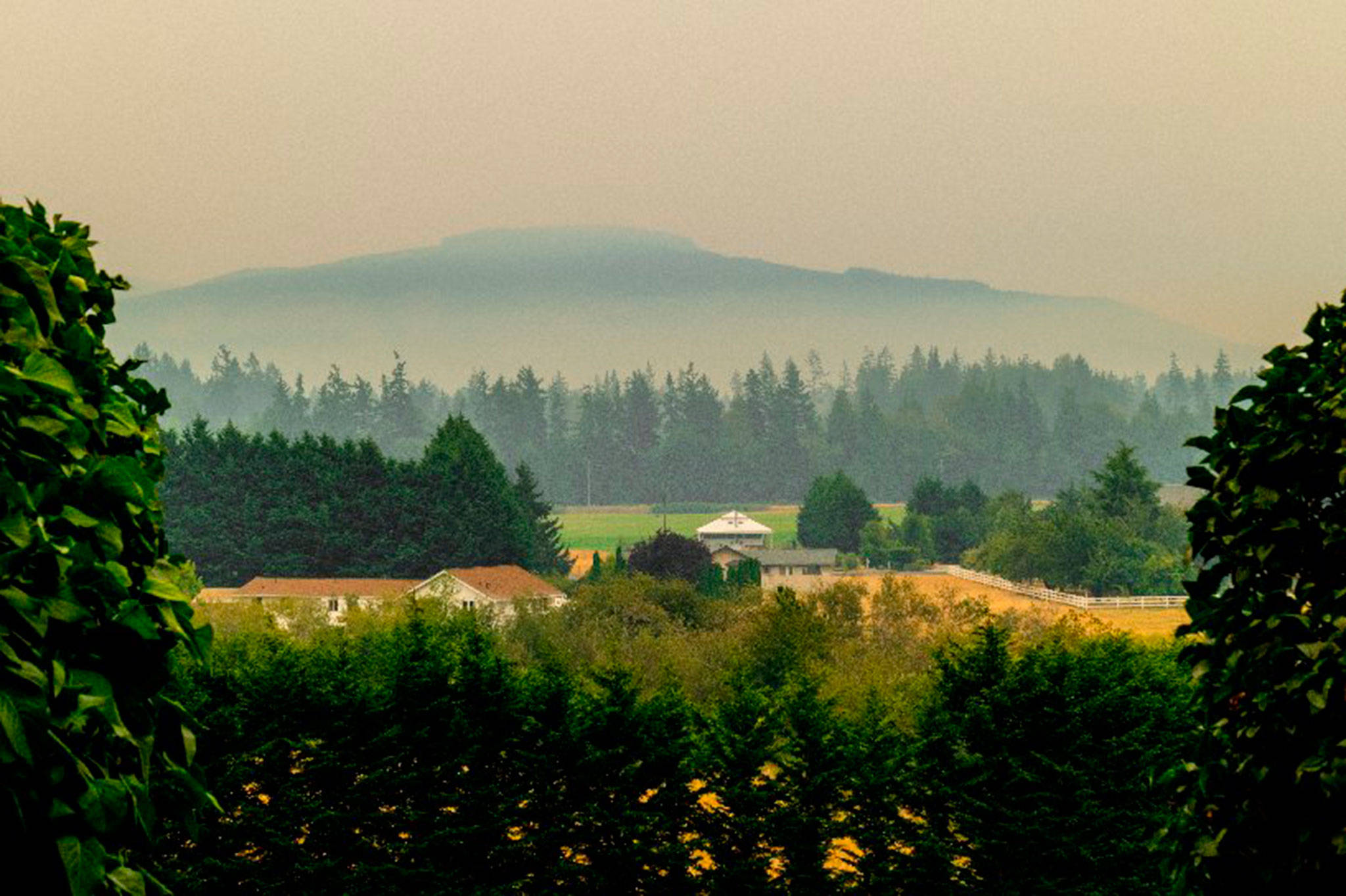Ash reached as far as Sequim as thousands of acres of wildlands burn across the state but due to high fire risks in the area, Sequim’s fire chiefs say their crews and equipment are mostly staying put.
Firefighters with Clallam County Fire District 3 reported to one close call on Labor Day.
Assistant Chief Dan Orr said an SUV caught fire on the U.S Forest Service’s Forest Road 2880 off Palo Alto Road in the afternoon but due to being so rural that by the time crews arrived it was mostly burnt up already.
“By the grace of God, it burned in a spot not by the forest,” Orr said.
Sequim’s fire chiefs worry fire dangers could elevate to that of the rest of the state.
On Tuesday, the State Department of Natural Resources lists Clallam and Jefferson Counties as one of the few counties to be in “high” wildfire danger zones whereas most counties are “very high/extreme.” However, on Wednesday the two counties were upgraded to “very high/extreme” wildfire danger.
Gov. Jay Inslee declared a state of emergency on Sept. 2, due to the wildfires in Central/Eastern Washington.
As of Wednesday afternoon, the Norse Peak Fire north of State Route 410 has burned about 43,000 acres, the Jolly Mountain Fire has burned about 24,500 acres near Cle Elum and the Eagle Creek Fire by Cascade Locks, Ore., has burned about 31,000 acres.
Sequimites, like many in the Seattle area, reported ash on their vehicles and in their yards Tuesday morning too.
The National Weather Service also issued an Air Quality Alert Tuesday due to wildfire smoke. An update to the alert has it ending by noon Thursday, Sept. 6, as conditions improve along the coast as marine air pushes inland and winds from the south push the smoke away.
Staff with the Weather Service say the air quality is expected to be the worst between 1,000-1,500 feet.
Burn bans are in effect in Clallam and Jefferson counties. Clallam County officials upgraded the burn ban to include small recreational fires no larger than 3 feet-by-3 feet-by-2 feet high on Wednesday morning.
Readying for the worst
Despite the dry conditions, Orr said fire crews have responded to less fires compared to last year.
So far this summer, Fire District 3 has responded to 13 wildland fires and two illegal burns whereas last summer in the same date range fire crews reported to 20 incidents and four illegal burns.
“For us, it has been slower this year and drier but it may be an anomaly,” Orr said.
As for medical calls, Orr estimates they’ve seen a decline of about 400 calls over last summer but the demand has remained steady.
As summer progressed, Orr said the fire danger level has increased leading to the complete burn ban except recreational fires.
“It hasn’t gotten to the point of drying out here like Eastern Washington where it’s like a tinder box,” Orr said.
Two Sequim firefighters, Bryan Swanberg and Darrell Sharp, are fighting wildfires with Incident Management teams with Swanberg in Oregon as a logistics chief and Sharp in Eastern Washington.
Orr said Fire District 3 has received requests to send out resources such as fire engines across the state but they plan to stay conservative with their operations in the area.
“If someone locally needed resources, we’d be much more apt to send them out,” he said.
The Gazette reports Sequim has received less than half-an-inch of rain since late May however the The National Weather Service reports that there’s a 60-percent chance of showers on Thursday-Friday, Sept. 7-8.
“A little bit of water is going to go a long way here,” Orr said.
For more information on fires statewide, visit https://inciweb.nwcg.gov.



